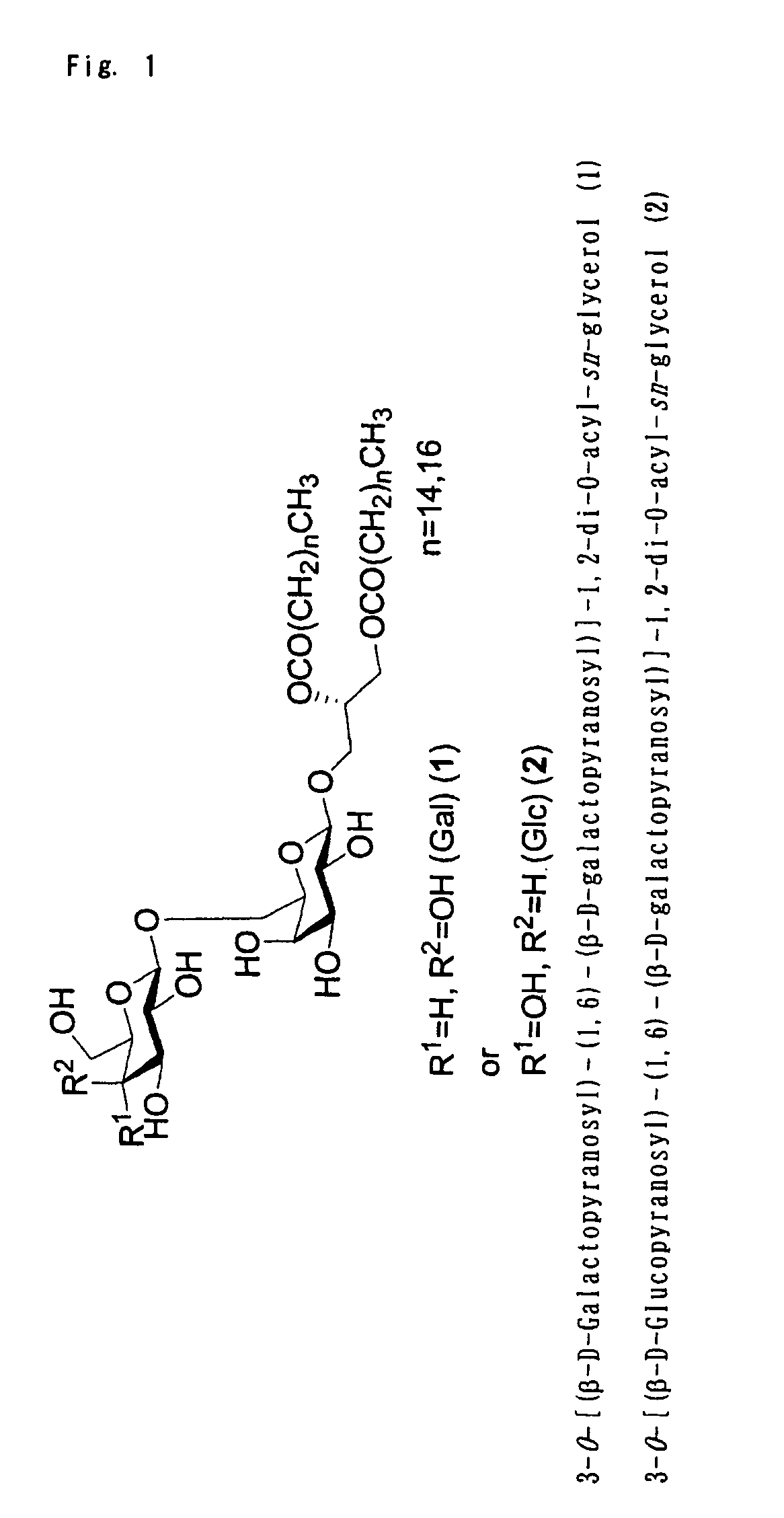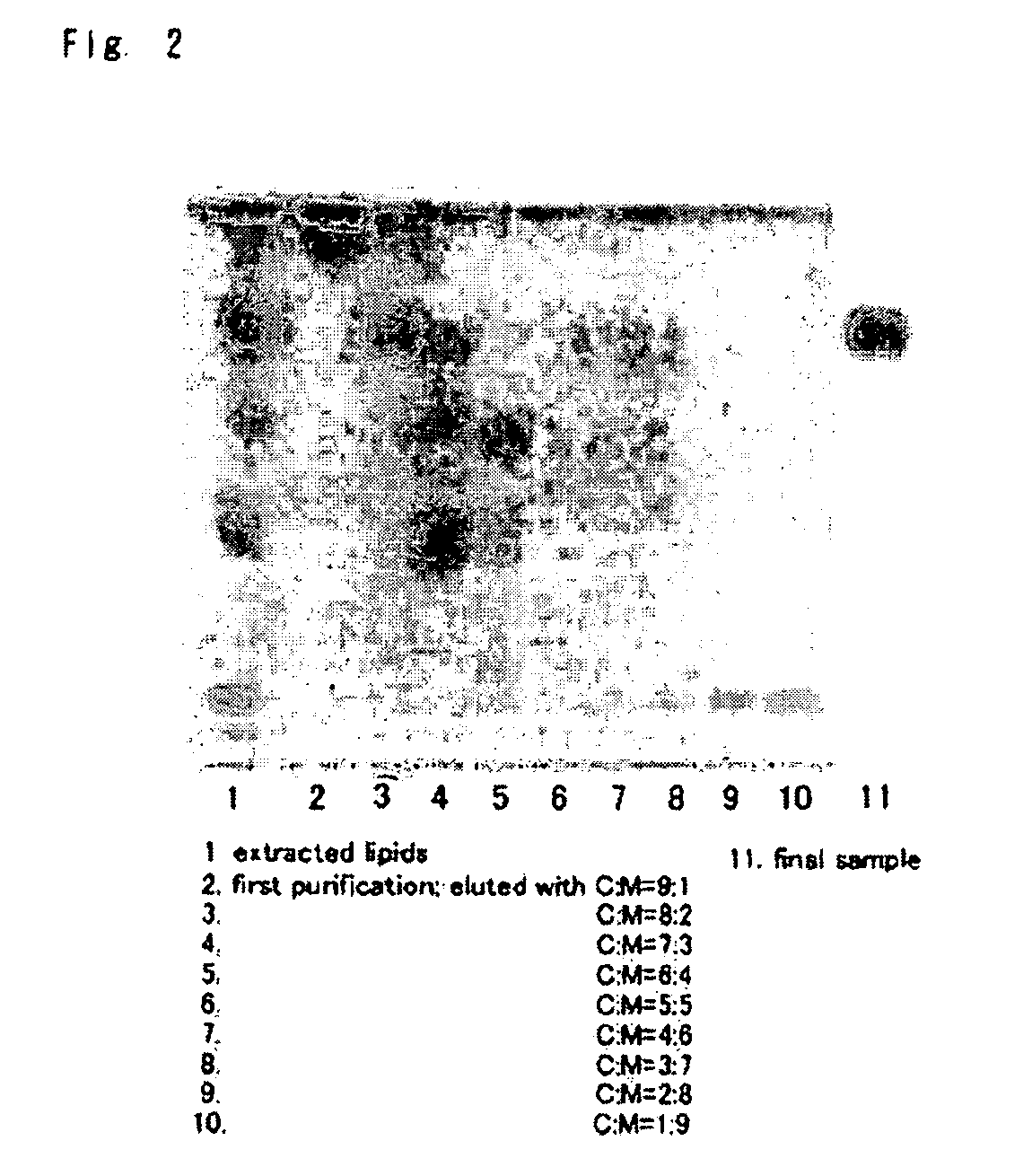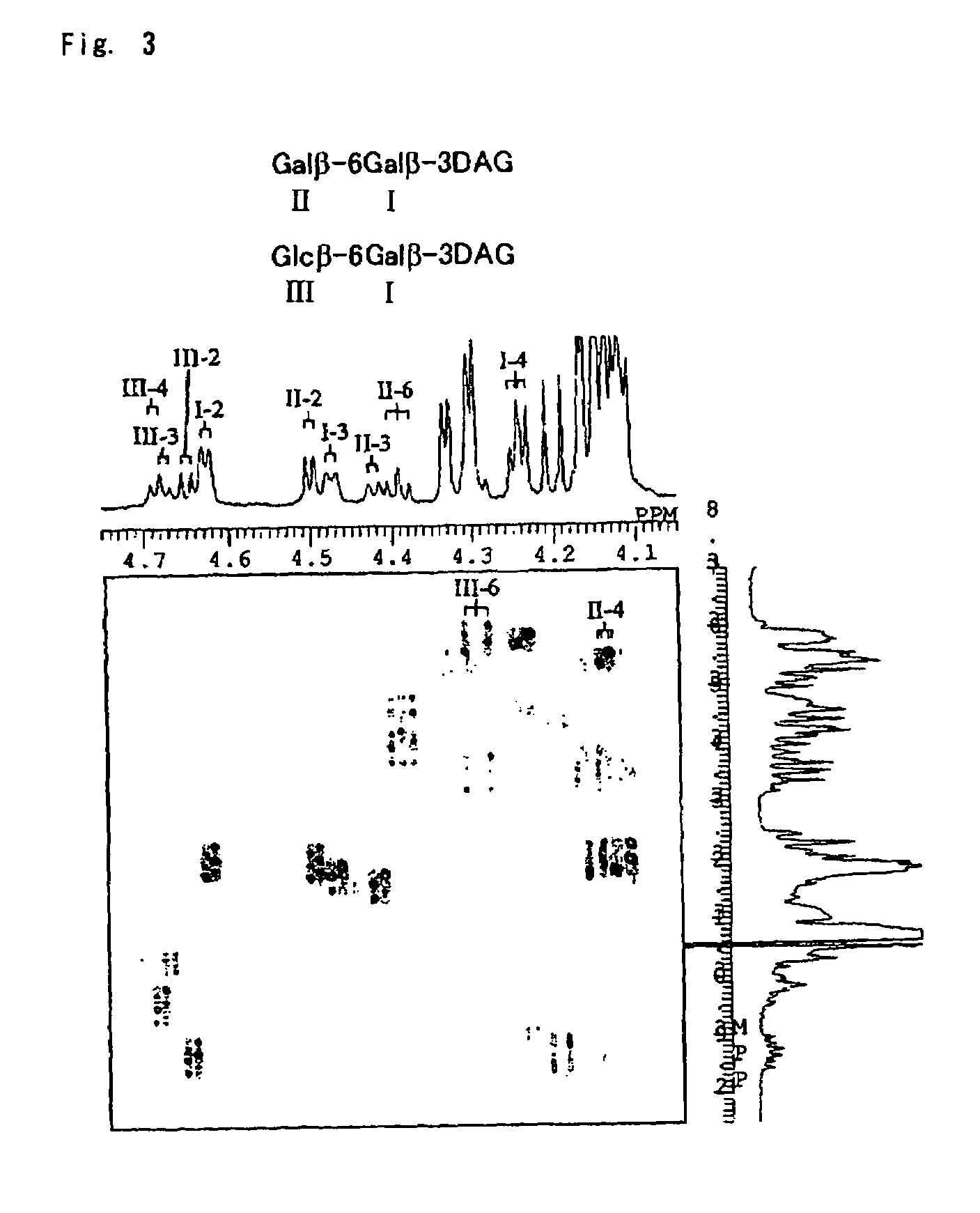Glyceroglycolipid antigen of Mycoplasma pneumoniae
a technology of mycoplasma pneumoniae and glycerol, which is applied in the field of glycerol-like antigen substances, can solve the problems of low specificity, inability to maintain reproducibility, and serious symptoms, and achieve the effect of high sensitiveness and accurate detection of mycoplasma pneumonia
- Summary
- Abstract
- Description
- Claims
- Application Information
AI Technical Summary
Benefits of technology
Problems solved by technology
Method used
Image
Examples
example 1
1. Separation and Purification of Glycolipid
[0102]Mycoplasma pneumoniae (Mac strain) was cultured in PPLO medium in the following way. Mycoplasma pneumoniae was cultured at 37° C. in a liquid medium obtained by adding 10% bovine serum, 10% penicillin, 0.0002% phenol red and 1% glucose to PPLO liquid basal medium (manufactured by Difco). Growth of the microorganism was confirmed by pH change of the medium, and after that, centrifugation was performed (16,000×g, 1 hour). This operation was repeated once to provide a sample for lipid extraction. To 200 L (volume in wet condition) of the microorganism sample, a mixed solvent of chloroform and methanol was added to extract lipid fraction.
2. Extraction of Lipid
[0103]The sample was suspended in methanol and it was allowed to stand for 4 hours. The double amount of chloroform was added thereto, the fungus body was crushed by ultrasonic wave, and the mixture was left for another 4 hours. Centrifugation was performed (3000 rpm), and supernata...
example 2
Antibodies to the Glycolipid Antigens of the Present Invention in a Sample from a Patient Suffering from Nervous Disease
[0115]An experiment in which lipid fractions of Mycoplasma pneumoniae comprising the glycolipid antigens represented by structural formulae 1 and 2 are reacted with serum from a patient suffering from Guillain-Barre syndrome was conducted according to TLC-Immunostaining method. Lipid fractions extracted from Mycoplasma pneumoniae were developed on a TLC plate, and serum from a patient suffering from Guillain-Barre syndrome was reacted therewith. The reaction was detected using a mixture of peroxidase-labeled anti-human IgG, IgM and IgA, and visualization was performed using chemical color development. FIG. 5 shows results of TLC development of lipid fractions of Mycoplasma pneumoniae ((a): stained with an orcinol reagent; and (b): reaction with serum from a patient suffering from Guillain-Barre syndrome was detected using TLC-Immunostaining method).
[0116]As shown i...
example 3
[0118]2 types of ELISA kits, in which Glcβ-6Galβ-3DAG and Galβ-6Galβ-3DAG prepared by synthesis were used respectively, were prepared, and IgM antibody titers to these antigens in human analytes were measured. As analytes, 40 paired sera from patients suffering from mycoplasma pneumonia were measured in order to examine whether or not the ELISA method is useful as a method for diagnosing mycoplasma pneumonia. 40 sera from healthy individuals were also measured for comparison of scores.
[0119]Preparation of antigen plates: 5 μg / mL of Glcβ-6Galβ-3DAG was prepared (methanol: acetonitrile solution). Each 50 μL of this solution was spread on each immunoplate for ELISA (flat bottom). Solvent was removed to prepare plates on which Glcβ-6Galβ-3DAG was immobilized. Plates of Galβ-6Galβ-3DAG were prepared in the same technique.
Protocol of ELISA: Blocking solution was developed in measurement wells (100 μL / well), and incubation was performed at room temperature for 1 hour. After that, washing w...
PUM
| Property | Measurement | Unit |
|---|---|---|
| binding constant | aaaaa | aaaaa |
| binding constant | aaaaa | aaaaa |
| binding constant | aaaaa | aaaaa |
Abstract
Description
Claims
Application Information
 Login to View More
Login to View More - R&D
- Intellectual Property
- Life Sciences
- Materials
- Tech Scout
- Unparalleled Data Quality
- Higher Quality Content
- 60% Fewer Hallucinations
Browse by: Latest US Patents, China's latest patents, Technical Efficacy Thesaurus, Application Domain, Technology Topic, Popular Technical Reports.
© 2025 PatSnap. All rights reserved.Legal|Privacy policy|Modern Slavery Act Transparency Statement|Sitemap|About US| Contact US: help@patsnap.com



